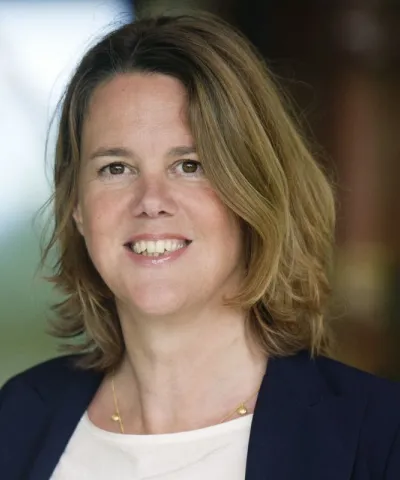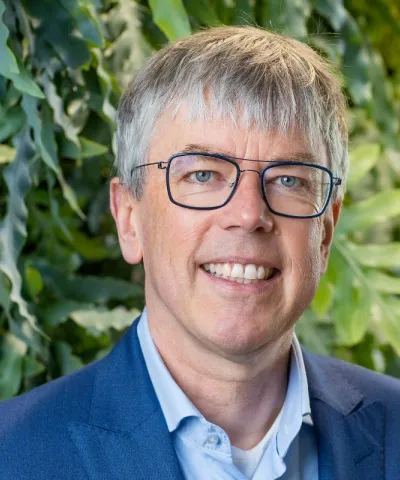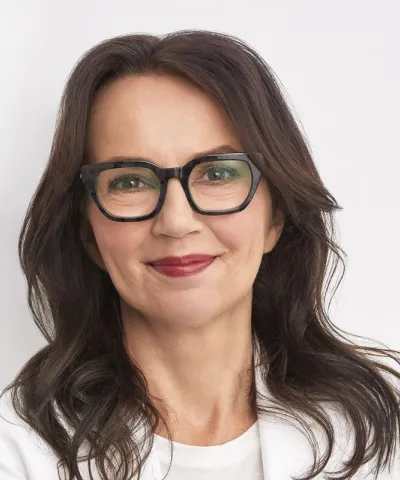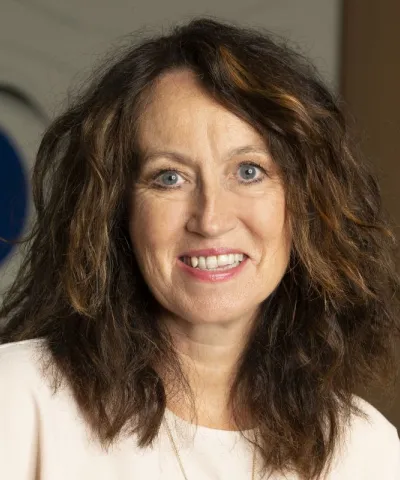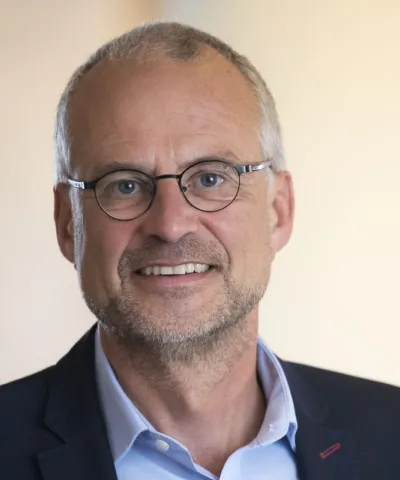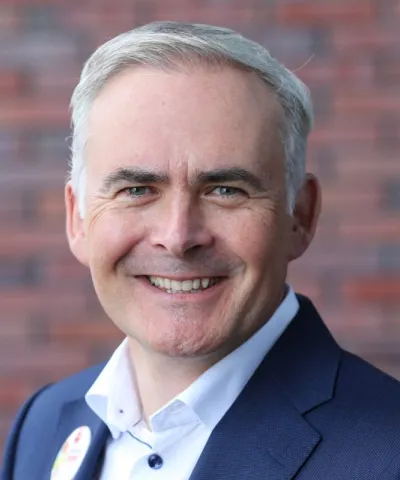Transparent supply chains as a basis for sustainable meat
The meat industry is a recurring subject within the sustainability issue. In recent years, a great deal of pressure has been exerted on the sector by politicians. Policy makers are advocating to downsize the local industry to reduce emissions.
At the same time, the figures show that meat consumption in the Netherlands has virtually remained stable for fifteen years. And with an important role in the overall Dutch food export, the sector is also the bread and butter of thousands of farmers. This combination makes the sustainability transition of the meat sector even more complex.
In Boxtel we join Ronald Lotgerink, CEO of Vion, to talk about sustainability within the meat industry.
In 2019, you came up with a first: starting a production line with plant-based products. Is that the future of meat?
“In 2019, we indeed started our plant-based line. We are aware of an important trend in the sector: the growing demand for alternative protein, such as plant-based products. There’s certainly a future in that, although I don’t think plant-based will completely replace meat.
The market is currently still small and mainly very concentrated in Northern Europe. You notice this trend is much less prevalent in other regions, such as Asia. I expect the share of animal protein in our local markets to drop by twenty percent, but that will take at least another ten years. To remain dynamic as a company and to move along, it is vital to proactively invest in the expected demands of future generations. But if you look at the international markets, such as Asia and Africa, there will be unprecedented growth for meat in the near future.”
“It Is vital to proactively invest in the expected demands of future generations"
The international playing field is an important topic of discussion. A frequently mentioned critique is that as an export country, we produce too much meat and therefore have to reduce. What's your view on that?
“In my opinion, producing less is not sustainable at all. We expect global demand for meat production to increase by sixteen percent by 2030. This is mainly due to the increasing demand in Asia and Africa. We often have the wrong inference that we regard the Netherlands as a kind of island. This is how we also view our surroundings and the environment. If you were to implement a substantial reduction in livestock numbers locally, this would be taken up elsewhere in the world, but in a less responsible way. By taking such measures, such as reducing the number of livestock, we deprive ourselves of the responsibility to solve sustainability issues.
If we’re able to make products in a good way, in balance with the environment, health and animal health, it will ultimately be much better for the environment. I regret to see that this balanced view of the environmental issue is missing in many interactions.”
If we look at the Dutch market, what changes are imminent in meat production?
“The perception of meat is undergoing a considerable shift: from volume product to value product. Consumers are learning to appreciate the meat product more and more and are making greater demands, such as attention to the environment, animal welfare and a healthy income for the farmer.”
Does a shift from volume to value product also lead to a different price proposition?
“We succeed in highlighting the added value and realising it. But we have to put it in perspective: if you ask consumers if they want to pay more for sustainable or organic food, they all say “yes”. Yet the reality looks different for us. About twenty percent of people buy organic meat and thus pay more. That may grow to twenty-five percent, but it won’t be much more. The price premium on this is a maximum of ten percent and we’re receiving signals from supermarkets that this percentage is sometimes lower. Consumers may say they are willing to pay for it, but they don’t put their money where their mouth is. Or they simply cannot afford it. I do believe there may be a difference in the price proposition, but the more expensive, most sustainable products are not yet a success with the masses.”
Does this also mean that the other seventy-five to eighty percent of consumers will not get around to sustainable meat?
“No, we must be more ambitious than that. The reality is that you can’t get sustainable meat without the additional costs of furnishing stables, space for the animals and further processing. But the key question is: how can you optimise this together with all players in the value chain and make it an affordable standard for consumers?
That requires a couple of things. First, it must be demonstrable and traceable from farmer to consumer that the meat meets the requirements, for example through blockchain. That’s the only way we can gain consumer confidence. Secondly, long-term partnerships: sustainable production requires links throughout the entire value chain.
These investments can only be financed if you’re sure that all participating parties follow the same agreement. This also includes a different type of pricing model for purchasing and sales. You can market sustainability through the joint value chain concept.
One example is our cooperation across the value chain with a large retailer. For a large part of the meat, we’ve entered into a new chain agreement, in which the retailer guarantees a certain minimum price. We can pass that on to the farmer. So such joint value chains really have a large-scale impact.”
Why is blockchain so important to you in terms of sustainability?
“Blockchain is proof to our buyers and consumers that we do what we promise. I want to prevent us from creating large-scale, strong value chains in the future, but without consumers having the confidence they’re buying a more sustainable piece of meat. Simply because they don’t believe the story.
“I believe the changes for consumers over the next ten years will be big, if not too big”
Blockchain allows you to trace the entire history of a product: the variety, medicines, feed, gender, where the parts have gone and so on. This way, we create an immutable truth that creates confidence in the value chain, but also towards the consumer. Through this, sustainability initiatives will gain more substance, since you are enabled to provide hard evidence that you are acting on what you stand for. In my view, this will also be an important part of quality labels in the future.”
The sustainability agenda therefore requires investments. Price remains an important motive for buyers. So how do you compete with non-sustainable parties?
“There’s still a lot to gain in the international field of competition. The most important thing is that we introduce a level playing field together, otherwise, we won’t get anywhere. There is a thirty percent difference in the cost price of a kilo of pork from Europe or from Brazil. We can all wax lyrical about sustainable meat, but if the consumer is given the choice between a pork steak for two euros or one for 3.50 euros, the majority will opt for the cheapest variant. Perhaps thirty percent of consumers will opt for the Dutch product through an origin label, but that’s not enough in my opinion. I also think farmers can be supported more to produce sustainably. It must be possible to make clear and permanent agreements for the sector. With joint chains you can take a very big step forward, but that’s only part of the answer. An accompanying government policy is needed to create that level playing field.”
It seems the transition in the meat industry, from farmer to supermarket, is very lively. How will consumers be affected by that?
“I believe the changes for consumers over the next ten years will be big, if not too big. Examples include different packaging, more expensive locally sourced meat and a different composition of the diet. That change is enormous when you realise that ninety-five percent of people eat meat and that the consumption pattern has hardly changed in recent years. That’s why I think the change for the average consumer may be more than he or she can handle. We must also realise that this country is only a small part of a larger problem and that, with a growing world population and an increasing demand for food, sustainability is entering a new, complex phase. As a player in the meat industry you can never please everyone, but with our joint value chains we try to find a golden middle way, with which we create the right, sustainable impact in the longer term.”

